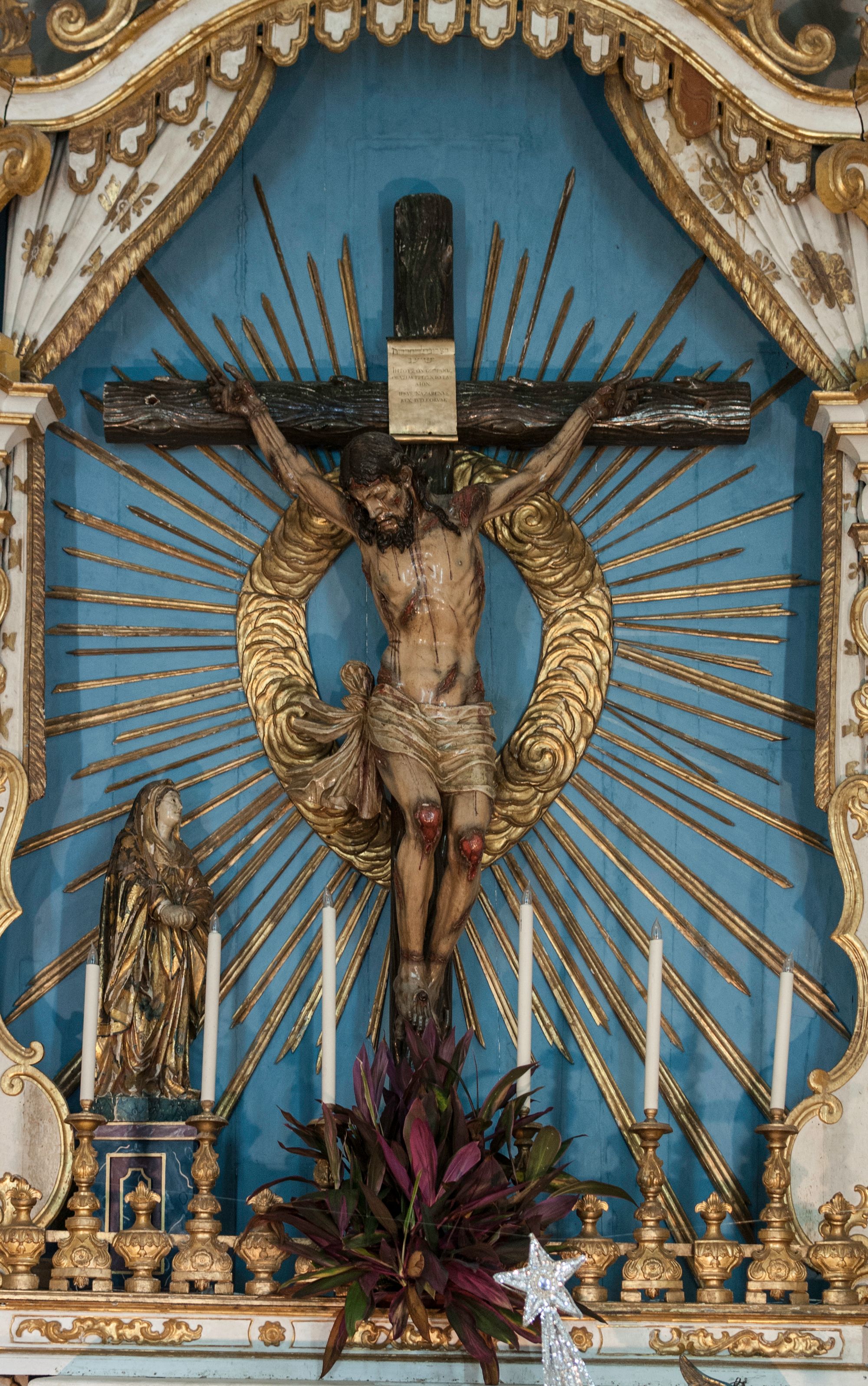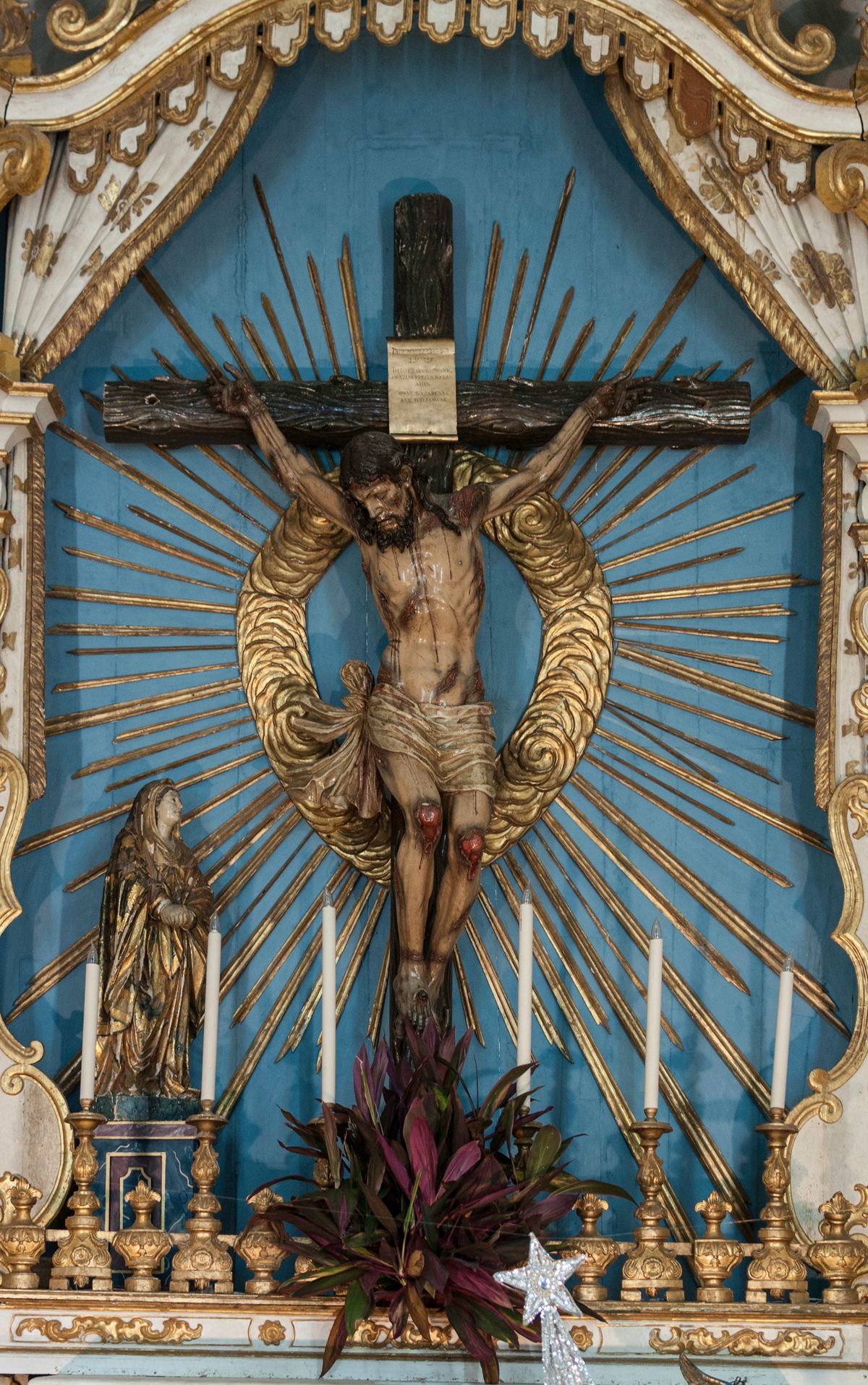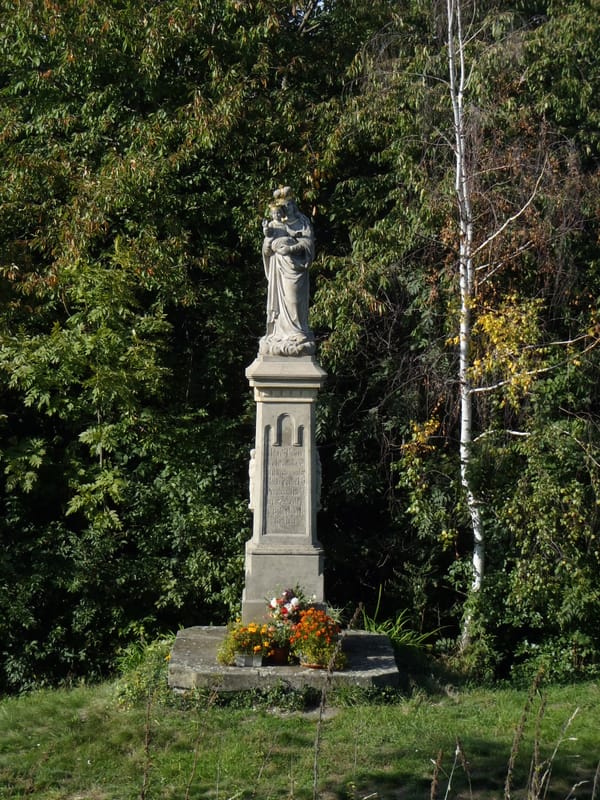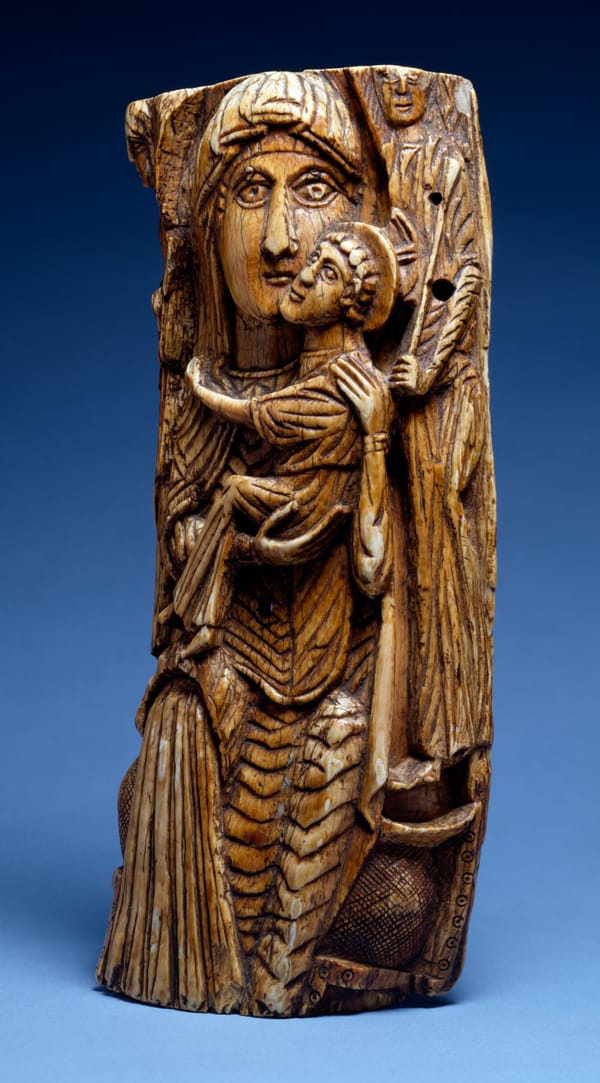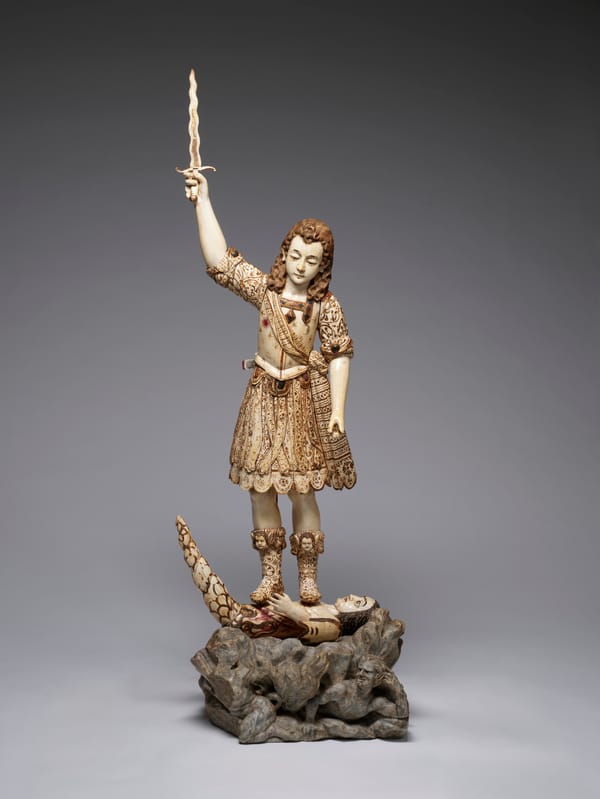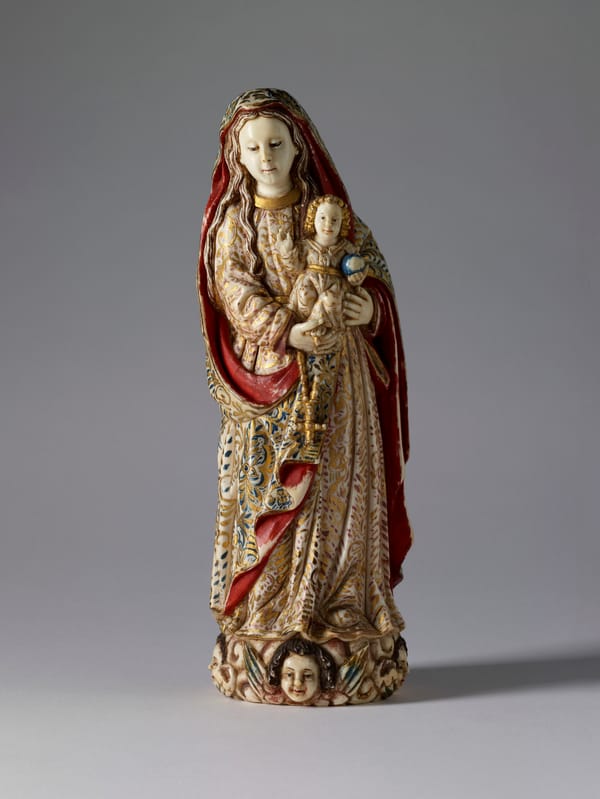About the Image:
The artwork is a religious sculpture of Jesus Christ on the cross, known as a crucifix, situated within a church. It is a part of Catholic iconography, which is common in many churches around the world. The figure of Christ is typically depicted in a realistic manner, expressing the physical and emotional suffering of the crucifixion.
The background halo with radiating lines suggests an element of Baroque influence, which is known for its dramatic use of light and shadow to evoke emotional responses. The sculpture's detailing and the use of gold leaf also hint at the opulence often found in Baroque religious art. This art period flourished in Europe from the early 17th century until the mid-18th century.
The dark wood of the cross contrasts with the golden elements, providing a visual representation of suffering (the cross) and divinity (the golden halo). The presence of other figures, such as what could be the Virgin Mary to the left, is typical of Catholic narratives depicting the crucifixion scene.
The blue and golden color palette is regal and often associated with Mary, symbolizing heaven and purity in Christian art. The church's location in Olinda, Brazil, suggests that this piece could be from the period of Portuguese colonialism when Baroque art was prominent in the region due to missionary activities.
